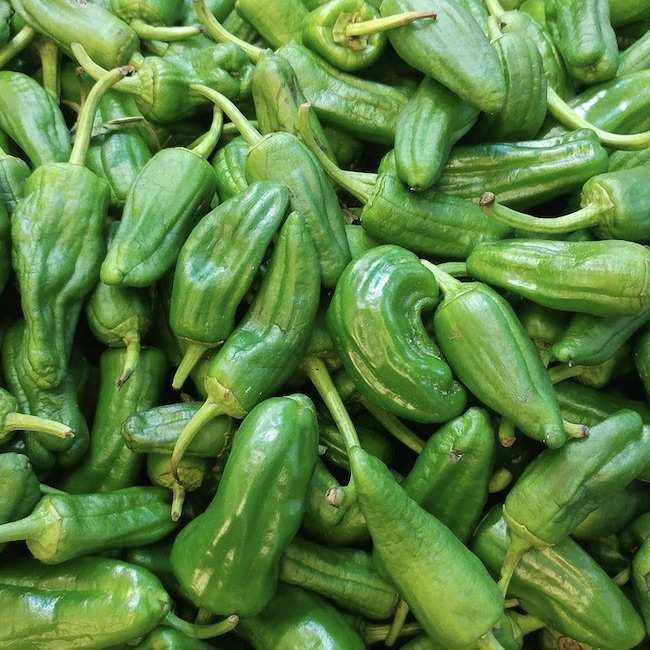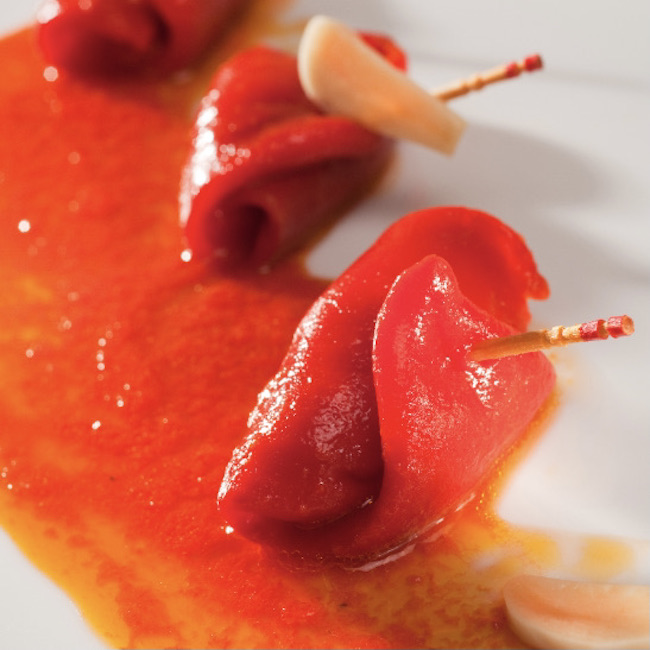.png.transform/rendition-xs/image_image%20(1).png)
From Padrón to Piquillo: This is How Peppers became the Real Thing in Spain
It all starts with the Aztecs but peppers have become an essential part of Spanish cuisine, used in tapas or popular dishes as gazpacho or paella
In fourteen hundred ninety-two, Columbus sailed the ocean blue. We know the story. Back to Spain he came, armed with things that have been a temptation for us for half a millennium as chocolate. But of course he also brought a healthier range of new items: maize, tomatoes, pumpkins, beans, turkeys, and the chili pepper.
The latter was a particularly useful find, because hot chilis, when dried and ground, were a cheap alternative to the highly fashionable but exorbitantly expensive black pepper (pimienta negra in Spanish). Indeed, chili peppers became known as red peppers (pimiento rojo) for this reason, although they’re a very different plant.
Cultivated by the Aztecs for thousands of years, the chili pepper contains varying amounts of capsaicin, the chemical that gives it that burning sensation. Over the centuries, the capsicin was bread out of bell peppers, also known as capsicums, so that today they generally have no fire at all, although, see below…
Bell peppers, meaty and full-flavored
Bell pepper plants favour sun, dislike the cold, and demand moist (but not waterlogged) soil, and thus are ideal for the south of Spain. No surprise, then, that Spain currently produces well over half the bell peppers produced in Europe, well in excess of a million tonnes annually. Also, the huge majority are grown in the southern regions of Andalusia and Murcia, although, once again, see below for some notable exceptions…
Unlike the insipid bell peppers cultivated under glass in many parts of the world, the perfect growing conditions in Spain’s southern regions gives rise to meaty, full-flavoured peppers, with a notable sweetness and an almost tangy taste.
They are used in a wide variety of dishes, almost always in their red or green versions (the more recent yellow and orange capsicums are not seen as ‘traditional’ in Spain). They adorn many kinds of paella, are a staple in estofados (stews), and are used to accompany all manner of meat dishes, adding a vibrant note of red to the plate as well as a rich sweetness to balance savoury flavours. Green peppers are also one of the key ingredients in gazpacho, providing an unassuming undertone, but without which it’s just not gazpacho.

Padrón peppers, the Galician (hot) surprise
Due to its historically isolated position in the damp, cold north-west of the Península, the region of Galicia has always nurtured its own, very distinctive strain of pepper. Padrón peppers (from the town where Saint James the Apostle is said to have landed on his evangelising tour of Spain) produces a small, green pepper (about 3 to 8 cm). Originally cultivated by Franciscan monks returning from the Americas in the 16th and 17th centuries, these peppers are recognised in the EU with their own protected designation of origin (DOP) status. They have a fresh, green taste, somewhat reminiscent of the flavour of peas. Hot, arid conditions generally lead to hotter chili peppers, so Galicia’s climate, a mixture of swirling rain and sudden bursts of heat, produces peppers that are mainly benign (about 90%), although the odd one will take your head off. As a much-quoted slogan on a t-shirt in Santiago de Compostela put it, ‘some are spicy, others don’t’. You may have tried them, since they’ve become one of the fashionable finger foods in New York and London in recent years. Originally harvested from May to the end of summer, they are now grown all year round, not only in Galicia, but in south of Spain, and indeed in Morrocco. But look for the real thing, which will carry the stamp ‘Pemento de Herbón DOP’.
They are typically lightly fried in olive oil for a couple of minutes, and served with course-grained sea salt as a tapa or shared plate. Their delicate flavour also makes them a popular accompaniment for meats, fish and seafood.

Piquillo peppers: a red treasure
The hidden gem. Produced in the region of Navarra (NE Spain), and enjoying Denomination of Origin (DO) status and regulation, Piquillo de Losada peppers are triangular, about 7 cm in length, and less fleshy than bell peppers. They have a deep red colour and a rather tough skin. So, why a hidden gem? First, because they have an intense, almost silky taste. Second, because they are most frequently conserved in tins or jars, making them the ultimate portable delicacy. After de-seeding and dry-roasting over coal, wood or gas, they are preserved in oil, resulting in a richly sweet flesh with a hint of smoke, dripping with red oil and their own juices. One of the traditional, artisanal producers is Conservas Artesanas Rosara, from the town of Andosilla. As the company’s Commercial Director, Ander Orduna, explains, they use unseasoned beech wood for roasting, which produces high temperatures and abundant flames. In this way the skins are scorched quickly, so that the intense flavours of the flesh remain intact, and the peppers can be peeled by hand, without the use of water. The result is soft flesh with all its original succulence and nothing else. If you want to ‘posh-up’ a salad or pizza, just crack a tin of these. Informal eateries often serve plates of piquillo peppers with nothing more than a chunk of bread, or with cheese and anchovies. They are also a boon at home, since you can adorn meat dishes in a flash. Since they retain their triangular form after roasting and peeling, they can be stuffed, and hold their shape easily, whether cooked or served cold. Try them filled with cod, or with rice and morcilla (blood sausage). In fact, almost anything will do. Use a filling of tuna mayo and you have an instant meal. No fuss.

